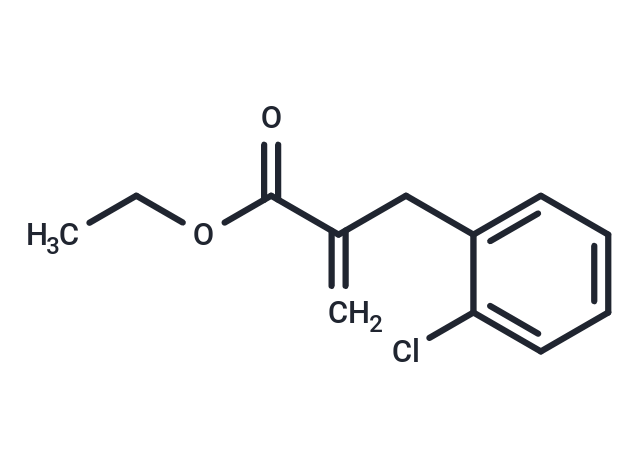Shopping Cart
- Remove All
 Your shopping cart is currently empty
Your shopping cart is currently empty

INF39 is a noncytotoxic and irreversible NLRP3 inhibitor.

| Pack Size | Price | Availability | Quantity |
|---|---|---|---|
| 1 mg | $46 | In Stock | |
| 5 mg | $94 | In Stock | |
| 10 mg | $145 | In Stock | |
| 25 mg | $293 | In Stock | |
| 50 mg | $438 | In Stock | |
| 100 mg | $662 | In Stock | |
| 200 mg | $926 | In Stock | |
| 1 mL x 10 mM (in DMSO) | $98 | In Stock |
| Description | INF39 is a noncytotoxic and irreversible NLRP3 inhibitor. |
| In vitro | INF39 possibly reacts with Cys-SH residues in the active site of cysteine protease caspase-1 but does not directly inhibit caspase-1 activity. INF39 (10 μM) can markedly inhibit ATP- and nigericin-induced IL-1β release. In the macrophages, INF39 suppresses caspase-1 activation and pyroptosis. INF39 can also block the NF-κB pathway. INF39 can reduce the steady-state (or basal) BRET signal of NLRP3, and not affect the viability of cells. INF39 cannot affect the initial conformational changes suffered by NLRP3 upon sensing the decrease of intracellular K+, but it affects the second step of NLRP3 conformational change. INF39 reaches the intestinal epithelium without undergoing chemical modifications. It is likely to act locally at the mucosal epithelial level after absorption into epithelial cells. |
| In vivo | INF39 (p.o.) reduces systemic and colonic inflammation in rats treated with 2,4- dinitrobenzene sulfonic acid. In inflamed rats, INF39 (12.5/25/50 mg/ kg) markedly increases body weight. DNBS causes a significant increment of spleen weight (+39.3%). This increase is markedly reduced by administration of INF39 (+2.2, +4.3 and +4.8% at 12.5, 25, 50 mg/kg, respectively). The inhibition of NLRP3 inflammasome complex with INF39 can dose-dependently attenuate the decrease in colonic length (?19, ?13 and ?8% at 12.5, 25, 50 mg/kg, respectively). Rats treated with INF39 shows a significant reduction of macroscopic damage score (4.7 at 12.5 mg/kg, 3.1 at 25 mg/kg, and 2.8 at 50 mg/kg). |
| Cell Research | Human THP-1 cells were exposed to INF39 (0.1?100 μM, 72 h), and then cell viability was evaluated by the MTT assay. |
| Animal Research | Animal Models: Male Sprague?Dawley rats. Solvent: olive oil. Dosages: 12.5,25.0,50.0 mg/kg/day,p.o. |
| Molecular Weight | 224.68 |
| Formula | C12H13ClO2 |
| Cas No. | 866028-26-4 |
| Smiles | CCOC(=O)C(=C)Cc1ccccc1Cl |
| Relative Density. | 1.131 g/cm3 (Predicted) |
| Storage | Powder: -20°C for 3 years | In solvent: -80°C for 1 year | Shipping with blue ice. | |||||||||||||||||||||||||
| Solubility Information | DMSO: 10 mg/mL (44.51 mM), Sonication is recommended. | |||||||||||||||||||||||||
Solution Preparation Table | ||||||||||||||||||||||||||
DMSO
| ||||||||||||||||||||||||||

Copyright © 2015-2025 TargetMol Chemicals Inc. All Rights Reserved.